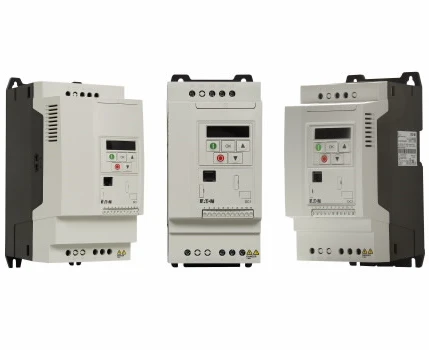There was a time when putting in and maintaining an HVAC system was a simple process of ducting, routing, and connecting everything to the main production unit as well as confirming the power load was sufficient and wouldn’t pop a fuse box. Today, HVAC systems are a lot more complicated. Between safety and building regulations as well as added technology, maintenance sensors and higher output demands for hotter, longer conditions in general, HVAC systems have to take on a harder demand. And, a lot of times, if the energy management isn’t sufficient, the given HVAC system is going to have problems or fail periodic certification inspections.
To solve the problem of energy management, variable frequency drives or VFDs have been the go-to tool for HVACs for decades. The technology isn’t new, but the capabilities and capacity of the latest VFDs put the earlier models back into stone age by comparison. These tools weren’t immediately built just for HVAC management; VFDs have been applied to all types of electrically-powered utility systems such as pumps, pressure plumbing, manufacturing and more. By controlling energy management 24/7 in an automated fashion, a VFD clearly pays for itself with the energy savings produced over time, so it’s practically essential in today’s building or production systems.

However, when pumps are combined with HVAC production units as well as high-output fans, all of which require different power loads at different types and changing constantly, a far better VFD is going to be needed to keep up with the constant shifting, in addition to managing the power load for all the sensors and smaller connection nodes as well. This is where Eaton VFDs really shine and show their quality. Built to handle far more than standard demands, Eaton VFDs matched up to HVAC systems are more than capable of dealing with high load conditions on a consistent basis versus periodically.
Eaton VFDs are able to hit a complicated system running and connect right in. Much of this is due to the fact that the Eaton units are designed to automatically adapt to the change requirements that otherwise have to be tuned and watched for new changes constantly. Instead, the Eaton VFD algorithm controls do the same automatically. Even better, everything is already set up to go right on delivery and unpacking. Because Eaton design teams already have a strong familiarity with different application approaches, they anticipate the same in the product capabilities. The result is a VFD that cuts down on the configuration tremendously, giving users far more production time and less down time on maintenance.
Most users automatically see a 10 percent energy efficiency improvement right off the bat when switching to an Eaton VFD setup. And Seagate Controls is available to help with specific applications and system installation of Eaton VFDs as well. So, there’s no guessing game once the VFD is delivered. Instead, Seagate Control specialists work directly with customers on what their current HVAC system has and does, and then help the customer match the right Eaton VFD to the order needed. It’s a high level of customer satisfaction backed up as well by our ongoing client support and troubleshooting. You could work with other VFDs, and then have to spend days trying to make sense of the product content. Or you can work with Seagate Controls and have your Eaton VFD up and running, improving your HVAC system immediately. Most find the latter choice the better one. Call us at Seagate Controls to find out more.
Source Url :- https://toptrendybusiness.com/managing-eaton-vfds-with-hvac-systems/


